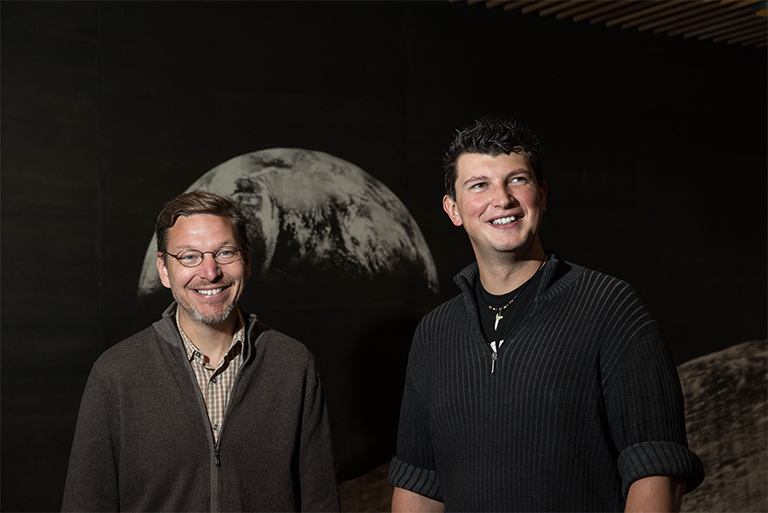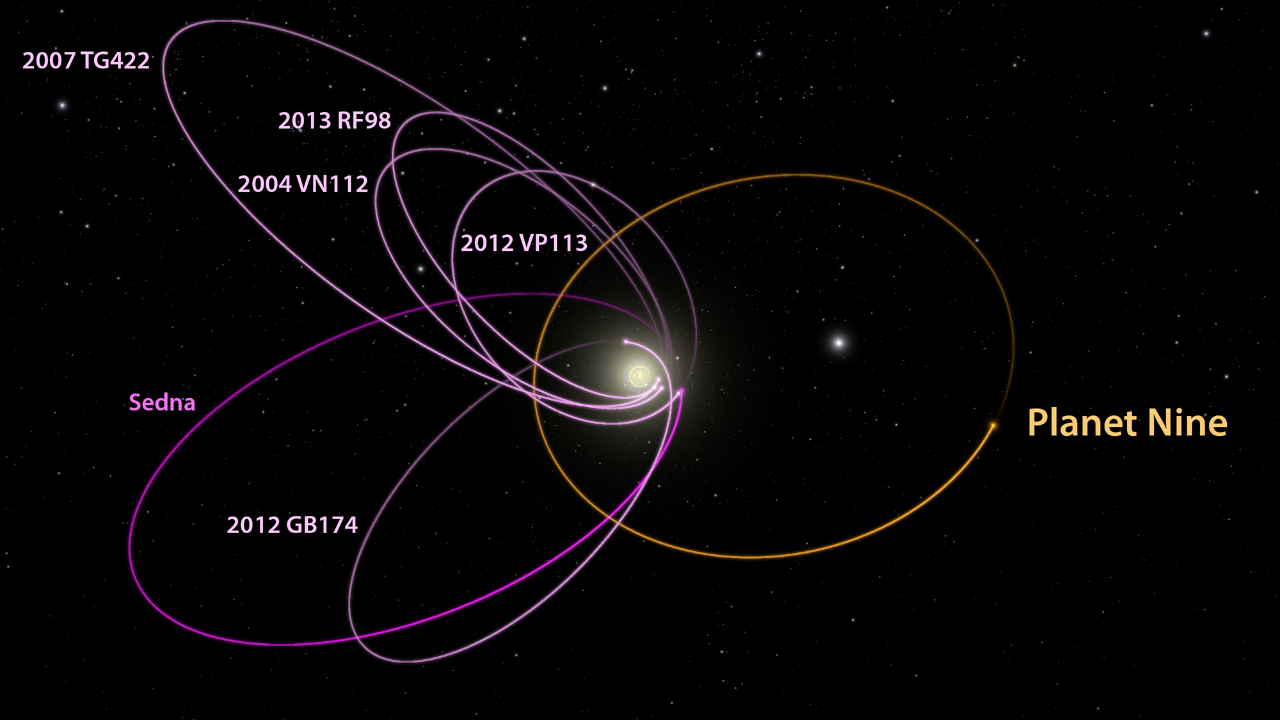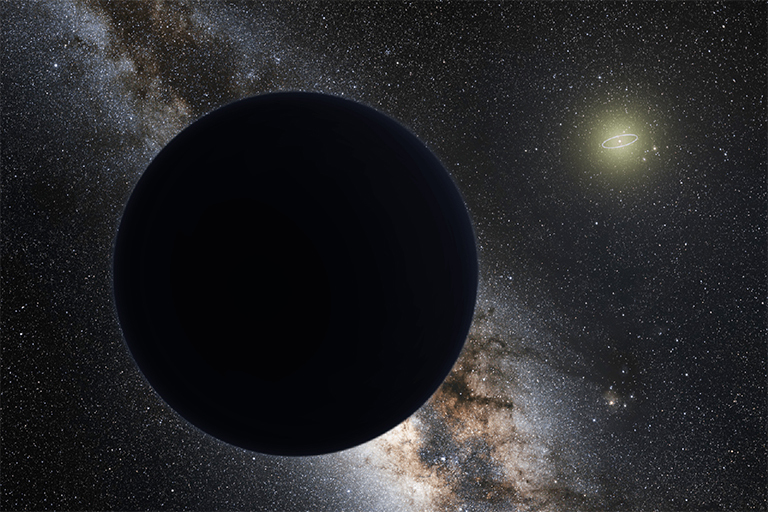Blogs | Alien Vs. Editor | October 6, 2017
Planet Nine
The super Earth that came home for dinner
It might be lingering bashfully on the icy outer edges of our solar system, hiding in the dark, but subtly pulling strings behind the scenes: stretching out the orbits of distant bodies, perhaps even tilting the entire solar system to one side.
If a planet is there, it’s extremely distant and will stay that way (with no chance – in case you’re wondering – of ever colliding with Earth, or bringing “days of darkness”). It is a possible Planet Nine, a world perhaps 10 times the mass of Earth and 20 times farther from the sun than Neptune. The signs so far are indirect, mainly its gravitational footprints, but that adds up to a compelling case nonetheless.
One of its most dedicated trackers, in fact, says it is now harder to imagine our solar system without a Planet Nine than with one.
“There are now five different lines of observational evidence pointing to the existence of Planet Nine,” said Konstantin Batygin, a planetary astrophysicist at Caltech whose team may be closing in. “If you were to remove this explanation, and imagine Planet Nine does not exist, then you generate more problems than you solve. All of a sudden, you have five different puzzles, and you must come up with five different theories to explain them.”
Batygin and his co-author, Caltech astronomer Mike Brown, described the first three breadcrumbs on Planet Nine’s trail in a January 2016 paper, published in the Astronomical Journal. Six known objects in the distant Kuiper Belt, a region of icy bodies stretching from Neptune outward toward interstellar space, all have elliptical orbits pointing in the same direction. That would be unlikely – and suspicious – enough. But these orbits also are tilted the same way, about 30 degrees “downward” compared to the pancake-like plane within which the planets orbit the sun.

Breadcrumb number three: Computer simulations of the solar system with Planet Nine included show that there should be more objects tilted with respect to the solar plane. In fact, the tilt would be on the order of 90 degrees, as if the plane of the solar system and these objects formed an “X” when viewed edge-on. Sure enough, Brown realized that five such objects already known to astronomers fill the bill.
Two more clues emerged after the original paper. A second article from the team, this time led by Batygin’s graduate student, Elizabeth Bailey, showed that Planet Nine could have tilted the planets of our solar system during the last 4.5 billion years. This could explain a longstanding mystery: Why is the plane in which the planets orbit tilted about 6 degrees compared to the sun's equator?
“Over long periods of time, Planet Nine will make the entire solar-system plane precess or wobble, just like a top on a table,” Batygin said.
The last telltale sign of Planet Nine’s presence involves the solar system’s contrarians: objects from the Kuiper Belt that orbit in the opposite direction from everything else in the solar system. Planet Nine’s orbital influence would explain why these bodies from the distant Kuiper Belt end up “polluting” the inner Kuiper Belt.
“No other model can explain the weirdness of these high-inclination orbits,” Batygin said. “It turns out that Planet Nine provides a natural avenue for their generation. These things have been twisted out of the solar system plane with help from Planet Nine and then scattered inward by Neptune.”

The remaining step is to find Planet Nine itself. Batygin and Brown are using the Subaru Telescope in Hawaii’s Mauna Kea Observatory to try to do just that. The instrument is the “best tool” for picking out dim, extremely distant objects lost in huge swaths of sky, Batygin said.
But where did Planet Nine come from? Batygin says he spends little time ruminating on its origin – whether it is a fugitive from our own solar system or, just maybe, a wandering rogue planet captured by the sun’s gravity.
“I think Planet Nine’s detection will tell us something about its origin,” he said.
Other scientists offer a different possible explanation for the Planet Nine evidence cited by Batygin. A recent analysis based on a sky mapping project called the Outer Solar System Origins Survey, which discovered more than 800 new “trans-Neptunian objects,” or TNOs, suggests that the evidence also could be consistent with a random distribution of such objects. Still, the analysis, from a team led by Cory Shankman of the University of Victoria, could not rule out Planet Nine.
If Planet Nine is found, it will be a homecoming of sorts, or at least a family reunion. Over the past 20 years, surveys of planets around other stars in our galaxy have found the most common types to be “super Earths” and their somewhat larger cousins – bigger than Earth but smaller than Neptune.
Yet these common, garden-variety planets are conspicuously absent from our solar system. Weighing in at roughly 10 times Earth’s mass, the proposed Planet Nine would make a good fit.
Planet Nine could turn out to be our missing super Earth.
TAGS:PLANET NINE, PLANET, KUIPER BELT







